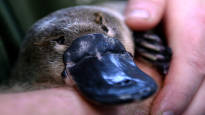Researchers hope that platypuses released into the Royal National Park would form a new population in the national park area.
The platypus, one of Australia’s most unique animal species, has been returned to the country’s oldest national park, the Royal National Park, south of Sydney.
The platypus disappeared from the area about half a century ago. According to the New South Wales state government, there have been no confirmed platypus sightings in the national park for decades.
This changed last Friday when the first four platypuses, all females, were released into the Royal National Park. In the future, they get two more females and four males as friends.
The platypus to be transferred to the national park have been collected from various locations in south-eastern New South Wales. The researchers hope that the creatures would form a new population in the area.
Habitats are shrinking
According to a 2020 study by the University of New South Wales, or UNSW, the number of platypus sightings in the state has decreased by almost a third over the past 30 years. These strange-looking animals are threatened by habitat destruction, wild beasts and extreme weather events such as droughts and forest fires.
Researcher at UNSW Tahneal Hawke told the news agency Reuters that the return of the platypus to the national park highlights the importance of protecting rivers and raises awareness of the plight of the enigmatic creature.
– The idea behind bringing back the platypus is that it acts as a flagship species. It’s like a freshwater koala in Australia, Hawke said.
Belonging to mammals, platypuses are known for their beaks, flipper feet and poisonous spurs on their ankles. It does not give birth but lays eggs and spends a large part of its life cycle in water.
The Royal National Park was established in 1879. It is located about 35 kilometers, or an hour’s drive, south of Sydney.
You can discuss the topic on Wed 17.5. until 11 p.m.
